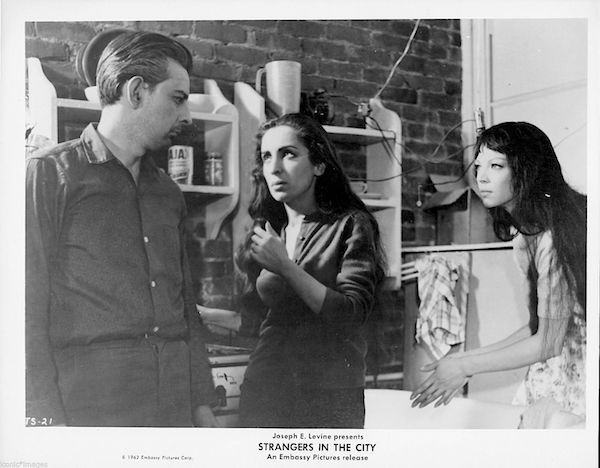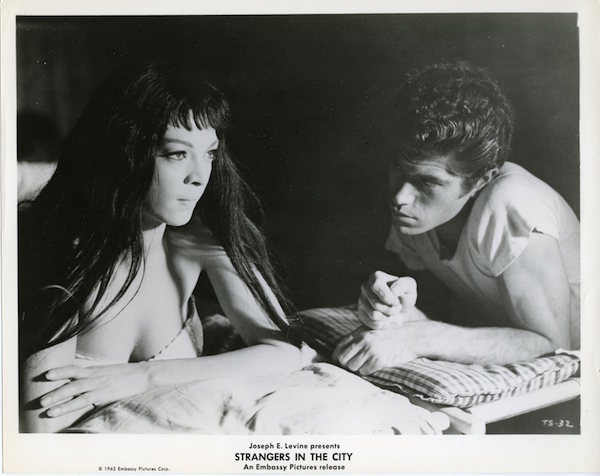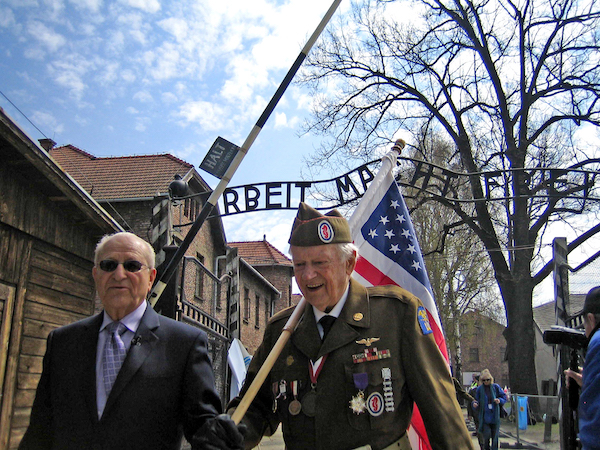
BY REBECCA FIORE | Rick Carrier received his first 35mm film camera as a result of World War II. To document combat situations, soldiers at the time were issued a Cineflex PH-330 — a direct copy of the German Arriflex 35 II model. Before being shipped out overseas, Carrier shot home movies of his sisters, who he left the camera with in New York City. When he returned home from war, he had to give the camera back to the government — but by that time, it was too late. The restless and perpetually curious Carrier had been bitten by the film bug.
He bought his own 16mm film camera and went to the offices of the New York Daily News to look through their files. There, he found inspiration for what would become his first and only movie. Carrier wanted to make something topical. By this time, it was the 1960s: John F. Kennedy was president, Roger Maris broke Babe Ruth’s home run record, and the Verrazano-Narrows Bridge was still under construction.
Carrier noticed a pattern in news stories — Puerto Rican immigrants who settled in East Harlem, or El Barrio, were struggling with racial tensions, poverty, and violence. In 1962, with a $40,000 budget, he wrote, directed, produced, edited, and scored “Strangers in the City.”
“It’s a grim and revealing film,” said Michael Bowen, a film historian and curator of “Beyond Cassavetes: Lost Legends of the New York Film World (1945-1970).” The Anthology Film Archive series focuses on low-budget features made in the city that were indies, before the term “indies” ever existed. “It’s a story that the American Dream isn’t as pure and pristine as we think,” said Bowen of Carrier’s work. “This isn’t a movie Hollywood would make. This is a story about the bitter realities, shot on the streets of New York.”
In “Strangers in the City,” the Alvarez family, newly relocated to a tenement in El Barrio, are barely making ends meet. The father, José (played by Camilo Delgado), refuses to get a job that could get in the way of his guitar playing — forcing the mother, Antonia (Rosita De Triana), to look for work. Meanwhile, the two teenaged children, Felipe (Robert Gentile) and Elena (Creta Marcos), are tormented by local gangs and sucked into prostitution, respectively.
About five years ago, while researching films, Bowen came across “Strangers” and reached out to Carrier, who was living in Chelsea at the time, which led to extensive interviews between the two. Carrier didn’t have a copy of his film, though. Bowen said Carrier had made a deal with Embassy Pictures, the movie’s distributor, and the company walked off with the negatives. The movie had limited release on VHS and was shown twice on the Turner Classic Movies (TCM) channel.
While featured on TCM, an introduction by Robert Osborne favorably compared Carrier’s film to “West Side Story,” the musical romantic drama that came out just a year before. He said Carrier’s film “paints a much grittier, more realistic picture of lives of Puerto Rican immigrants than does that brightly-colored musical about Jets and Sharks and Tony and Maria.”
Bowen found a 16mm copy of Carrier’s film for sale on eBay. By the time Bowen had the movie in hand, its creator had passed away at the age of 91.

“The screening is happening on the exact one-year anniversary of his death,” said Bowen, who noted that in addition to “Strangers,” Carrier was “deeply involved in filmmaking in many other ways.” Indeed, Carrier (once trained in amphibious warfare by the US Army) can claim another unique place in cinematic history. Employed by film producer Howard Hughes, he invented an underwater rigging system that allowed audiences to enjoy the 1955 Jane Russell vehicle “Underwater!” while fully submerged.
“It would have been such a pleasure to me to invite him,” said Bowen of the man he considers to be a true pioneer in the film industry. At the time “Strangers” was created, Bowen recalled, American-made independent films didn’t reach a wide audience and were true labors of love.
Carrier’s film certainly was a labor — and sometimes a bit dangerous. In a June 12, 2013 interview, Carrier told Bowen that he would just “grab the camera and go out. One I did on Seventh Ave. right on 56th Street, right near Central Park… I stood right in the middle of the street with the camera and I held my breath. Had a big red hat on, so everybody could see me.”
Carrier recorded all the music in his living room, in a single session. Additionally, he recorded hours of street noises from the window ledge of his Greenwich Village apartment, which he used as natural sound in the movie.
“I had a 1952 Cadillac convertible and I took the back seat out and I mounted the camera on a tripod. Bolted it right to the floor so that it was in there good,” Carrier noted in the Bowen interview. “And then I got a friend to drive it and I would get in the back and do all the tracking shots. Had to let a good bit of air out the tires so it would absorb the bumps.”
In a July 17, 1962 New York Times review of the drama, A.H. Weiler took note of Carrier’s camera work. The writer, like Bowen, compared the film to a documentary.
“Mr. Carrier has caught, however, some stark scenes that reflect the values of the documentary approach,” Weiler wrote. “His rubble-strewn lots of Harlem, his views of crowded streets with a Negro obtaining tinkling music from a set of glasses, hawkers shouting their wares, vistas of a deserted Coney Island in winter and the chase after a rat in the Alvarez apartment are glints of reality that stay in the mind’s eye.”
Carrier is one of many early directors who set the foundation of independent New York City films, Bowen said, opening the door for directors like Martin Scorsese, Abel Ferrara, and Spike Lee.
“Hollywood films rarely ever show you the real world,” Bowen noted. “But New York indie films depended on the real world.”
Carrier’s film will be shown Tues., Dec. 12, 7:30 p.m. at Anthology Film Archives (32 Second Ave. at E. Second St.). Tickets are $11 general admission and $9 for students and seniors. Runtime: 83 minutes. For reservations and more info, visit anthologyfilmarchives.org.


















